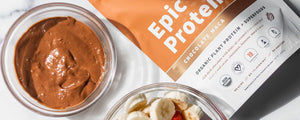
Why Should I Stretch After a Workout?
We’ve all heard the claim that stretching improves the range of motion in your joints and increases blood flow to your muscles. However, there are many other benefits to stretching such as reducing stress, improving your posture and ridding the body of toxins and lactic acid. Knowing when to stretch and using proper form are vital to preventing injury.
When and How Long Should I Hold a Stretch?
According to the American College of Sports Medicine, it is important to stretch after a workout. You achieve better results since the muscles are warm and the blood is flowing. Other studies suggest that stretching before a workout has little to no health benefits since your muscles are cold, tight and more prone to tearing or injuries. Hold your stretches for 30-60 seconds per movement, and be aware of your form. Don’t bounce, and try to move gracefully from one stretch to the next. Using the proper technique is essential and focusing on major muscle groups, such as the calves, thighs, hips, neck and back, is key. Form is crucial since stretching improperly can do more harm than good. Remember to hold your stretch to the point of tension, not the point of discomfort. Always be aware of your breathing and maintain good posture or alignment. Studies show that dynamic stretching, or stretching with momentum, is as effective as static stretching. Dynamic stretching has flow, much like the practice of yoga, which is a great way to increase your flexibility and rid the body of toxins and lactic acid. Lactic acid forms in the muscles when they have used up too much of their fuel reserve. This creates a tight or burning sensation that you typically experience during a more intense workout. Stretching helps to rid the body of toxins and lactic acid buildup since it increases the oxygen levels in your cells and improves circulation. And while the body naturally removes lactic acid and toxins on its own within the hour post your workout, stretching may further speed up the process and alleviate some of the burning or tightness in the muscles due to lactic acid accumulation. Studies maintain that stretching regularly, post workouts, may also decrease your risk of injuries due to exercise. However, it will not relieve muscle soreness due to overuse or fix pre-existing injuries. Consult your doctor or physical therapist if you experience any pain or lasting discomfort upon stretching. The basic rule of thumb: you do not need to stretch further than your normal range of motion or what you feel is comfortable. It is important to listen to your body, stay hydrated and remember to stretch AFTER, not before, your workout! If you need a little help touching your toes, yoga can be the perfect addition to your workout routine. ForteYoga.com is the perfect resource to help you get started.- https://www.mayoclinic.org/healthy-living/fitness/in-depth/stretching/art-20047931
- https://www.webmd.com/fitness-exercise/guide/how-to-stretch
- https://sportsmedicine.about.com/cs/flexibility/a/aa022102a.htm
- https://www.wikihow.com/Reduce-Lactic-Acid-Build-up-in-Muscles






